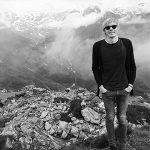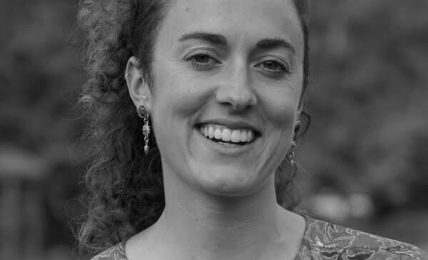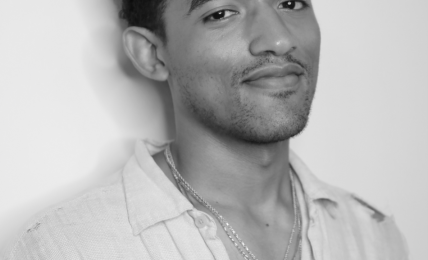Spukhafte Fernwirkung (2019) compacts the endless, challenging landscape of Iceland into a 36-minute time-lapse of images (640×480) collected from www.road.is, a website for monitoring road conditions in Iceland, over a three year period. Beginning the process in Skagaströnd before moving to more remote locations, Kailum Graves compiles and arranges thousands of these images in order to explore the fading boundaries and interdependence of two spatiotemporally separated objects: the physical and digital worlds.
:::
DigA: When I first saw your piece, I was drawn to the aesthetic that was reminiscent of Ansel Adams’ film photography during his time photographing the United States for the National Parks Service. What propelled you to choose Iceland as the target of your work?
KG: I have been obsessed with Iceland ever since I was around 8 or 9 years old. I have an addictive personality, which is why I don’t play video games and I try not to keep too much chocolate in the house because an obsession for me is a total attraction… for better or for worse. I say for worse because I sometimes make the mistake of over-romanticizing a place before I visit it.
I live in Australia, so Iceland always felt like an impossible dream for me, it was always a far away, magical, mysterious, and expensive destination. However, I applied for a residency at NES Artist Residency in Skagaströnd and I was accepted. The town is physically isolated from the rest of the world, with cliffs and beaches overlooking Húnaflói bay and the Westfjords on one side, and Mt Spákonufell towering over the town from behind.
I ended up spending more time outside wandering around, getting smashed in the face by the wind (and loving it), and standing with Icelandic horses for companionship in a field watching the spectacle of the auroras than I did in the studio.
After the residency, I spent three weeks following the Ring Road around the entire country. I fell in love with the landscapes, the mountains, the endless fractural like nature of the fjords, and the locals (who seemed to have a distant but friendly vibe), as well as the mythology of a wild and rugged country. I was able to see and recognize a lot of the roads and the landscapes that I had already started collecting from the webcams. Initially, I didn’t know how long I would collect the images for, but after seeing the country I knew I had to do it for a year and that I had to come back to the country a year later when I finished collecting them. Although somewhat digital, the project needed to start and end physically in Iceland.
DigA: In your piece, you juxtapose the rough and seemingly endless landscape of Iceland with how our digital experience affects our perception of time, how did you choose this as a medium to explore these ideas?
KG: The medium was an accident, but the accident plays an important role in my process and it is something I have learnt to embrace when stumbled upon.
I have a strange fascination with movies and how they deceptively use still images to create an illusion of time and motion. I have an ongoing experiment where I try to visually represent film, or moments in film, in a single image. Spukhafte Fernwirkung is a continuation of this but in reverse. Instead, I tried to capture a year, or moments of a year and moments of a country, in a single film. In a very corny and cheesy way, the work lasts for 36:50 minutes to represent the 365 days of the year.
I have always been captivated by long exposures, such as the works of Michael Wesely. And in the same way that a photographer goes out with a camera to (selectively) document the world, I went out into the world (the Internet) with my camera (my laptop) to (selectively) document the digital terrain (pun intended). Yet, for this project, the webcams and their angle were already predetermined. The only thing I had any control over was time (or the perception of time).
DigA: What was your process for this piece? What do you think the amount of time spent creating a digital piece versus how long people spend says about our relationship to digital media?
KG: The work was agony to make. I could have easily given up so many times. It involved visiting www.road.is every single day for an entire year and manually saving photos from every webcam to my computer. This process took a little over an hour and a half each day. My hand would be aching afterward from the repetitive motions. I began to realize that the process of making the work was kind of a long durational endurance art piece (a yearlong performance of this repetitive and boring task). Nonetheless, I think the creative labour behind the work, or any artwork, is often concealed. It’s hard, if not impossible, to reveal the hidden labour behind art, especially digital art, which is apparently easy and something a kid could do.
DigA: Why did you use low res images (640×480) in this work?
KG: This was another happy accident. The webcams captured photos what were only 640×480 (being poor quality webcam images with a purely utilitarian function). However, I have an unhealthy obsession with conventionally poor-quality images. Besides, I think the images worked for this project because they have a glitchy, yet painterly quality to them.
DigA: In what ways does the digital world have an impact on your perception of reality? How has this changed, if at all, during the global COVID-19 crisis?
KG: That’s a great, and difficult, question to answer.
All my work is made from the realization that humans have always interpreted nature based on their technology. Newtonian mechanics, for example, saw the Universe as clockwork mechanism, and genetics—discovered at the dawn of the computer age—viewed DNA as a digital code. Likewise, today we superimpose our current fixation with advanced simulations and artificial intelligence onto the laws of physics and, by doing so, ponder if we are ourselves living in a simulation.
Sometimes I think this is why contemporary humans attempt to view, process, and make sense of the world, or the Mona Lisa, through smartphones and photography. It is also why the pixel is perhaps the only way I can view, interpret, and make sense of the world (or the Icelandic landscape). Nonetheless, pixels interest me because they are the smallest visible controllable element of a digital image; beyond the pixel is just pure information—bits of information.
Thus, for me, photography has never been a tool to document and record reality; it has always been a means to manipulate it. Likewise, physics, particularly quantum physics, isn’t really about reality; it’s just the best description we have to try and make sense about how the world appears to us.
I don’t think my view has changed during the global COVID-19 crisis. However, I don’t think my mind has had a chance to contemplate this new ‘reality.’ I think I’m in a constant state of fight or flight, with my body getting pumped full of hormones and chemicals as it tries to prepare for physical action… yet on an individual basis, fight or flight feel like impossible options with COVID-19.
Check out Spukhafte Fernwirkung.
Read a response to this piece.
:::

Kailum Graves is an artist and binary archivist critically obsessed the Web and born-digital content. He is particularly interested in image-rich technologies and the way global media communication—a landscape controlled by a handful of multidimensional oligopolistic corporate-run networks—can be sampled, organized, and considered in new philosophical, sociological, and political terms. Nonetheless, while these issues are political and economic in nature, Kailum believes anti-capitalist art offers no real alternative to the economic and ideological discourses of multinational capitalism. In its place, he is interested in examining the politics of the image and the construction of truth. To do this, he uses the Internet, which has normalized the act of collecting and compiling information, to preserve and curate found images and raw material. The aim is to engage with the cultural space and aesthetics of the Internet—and the vast amount of digital information it contains—as a subject, material, and tool of artistic production.



